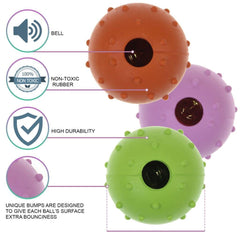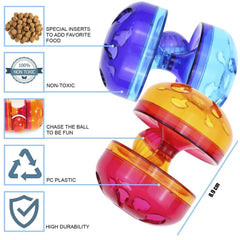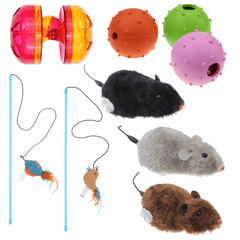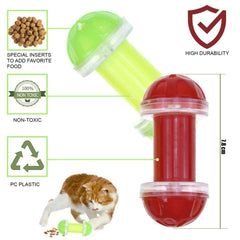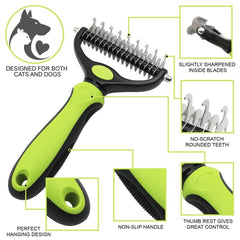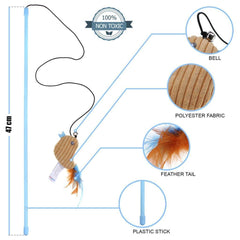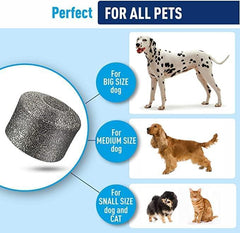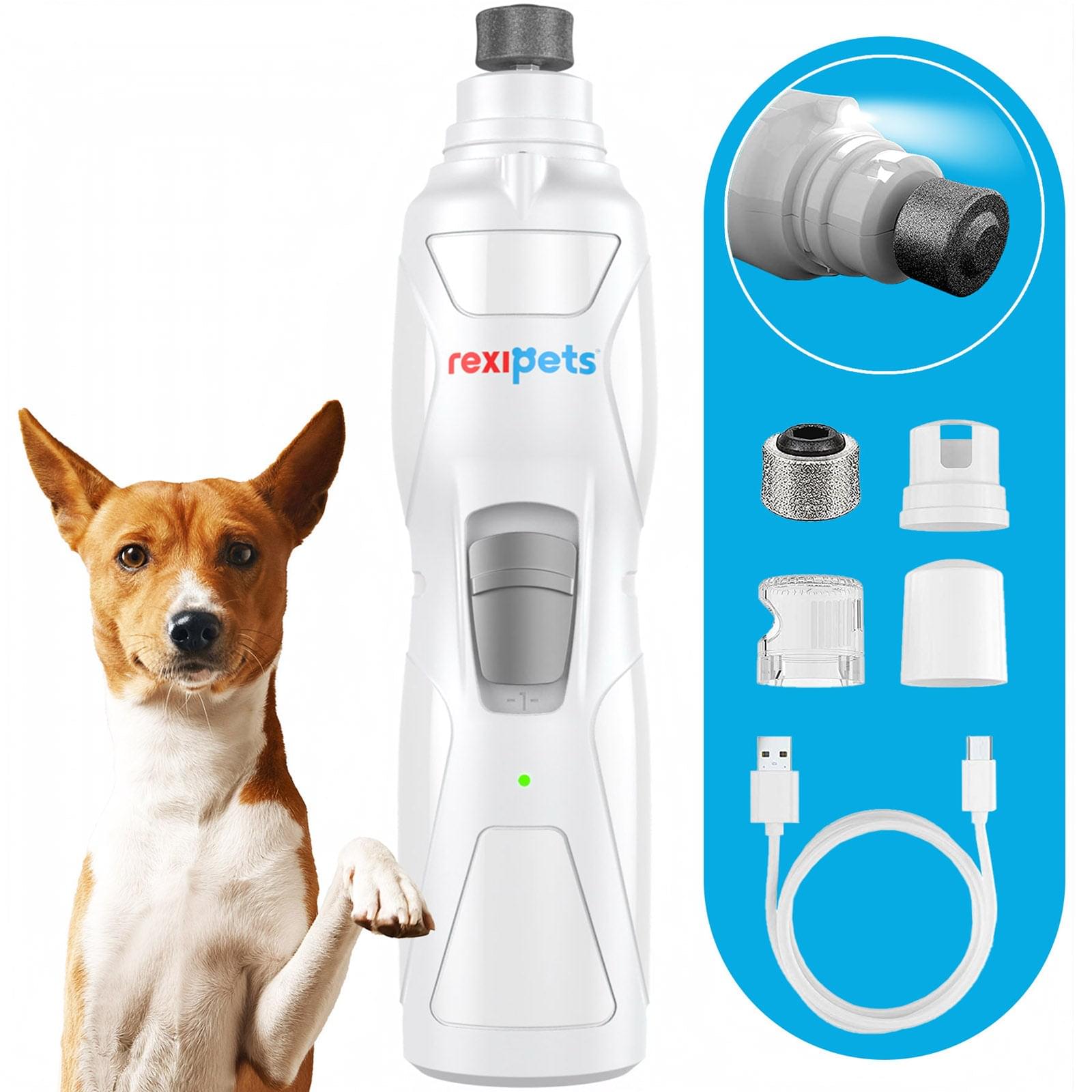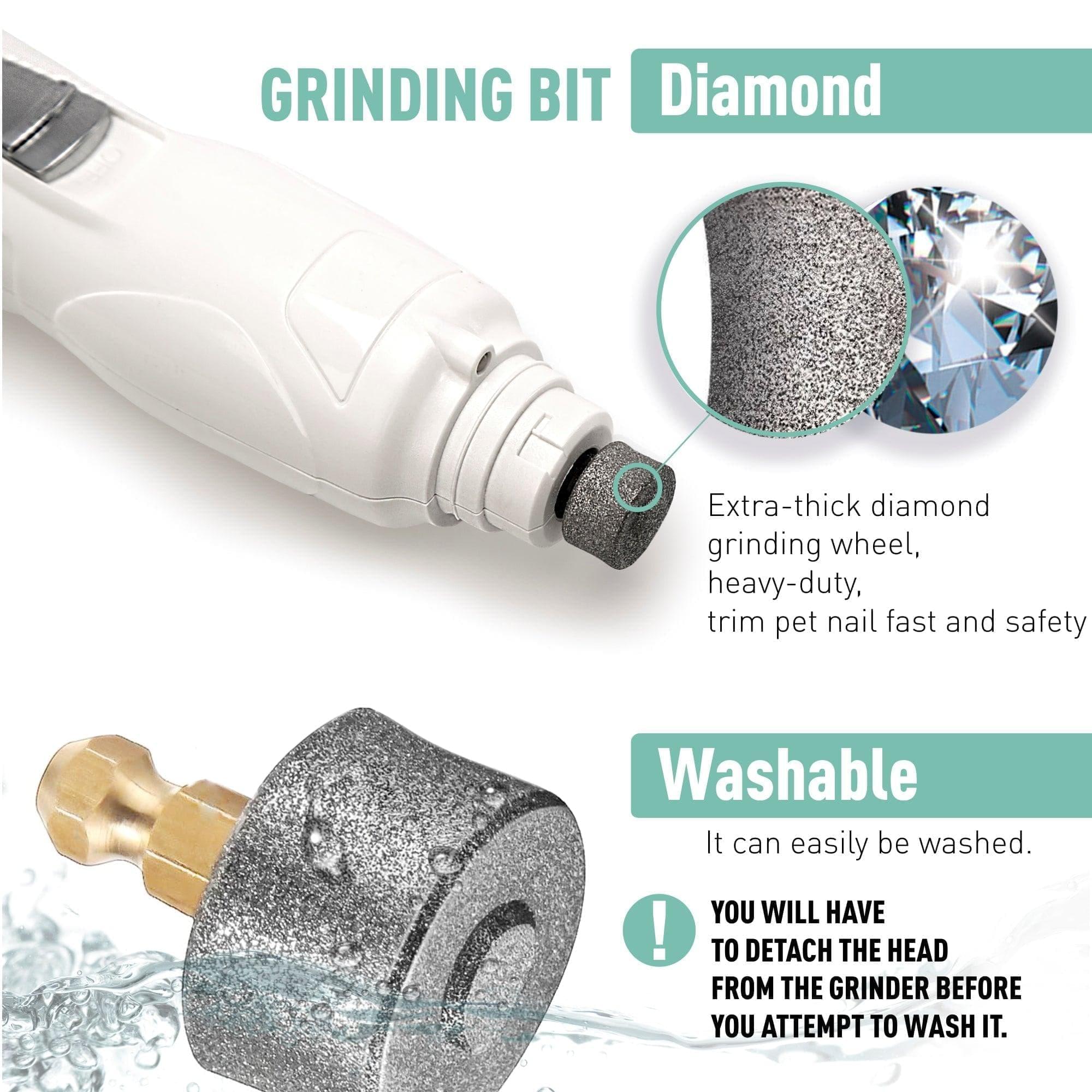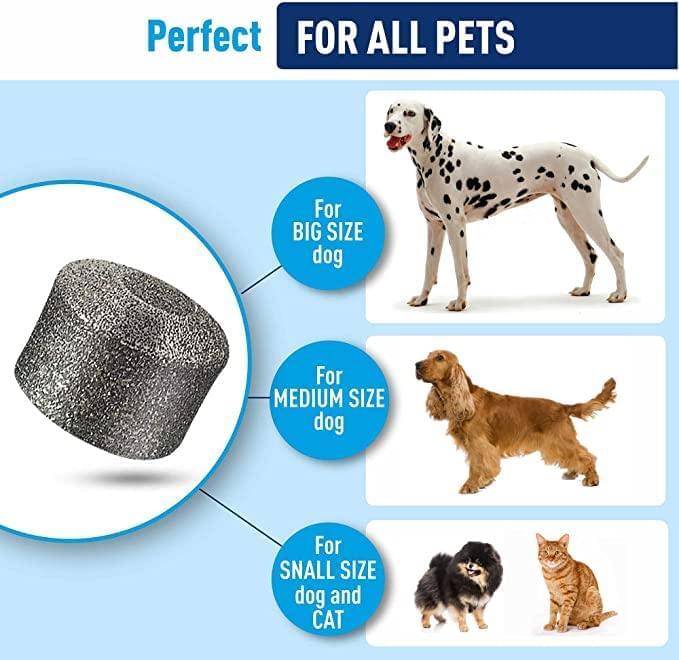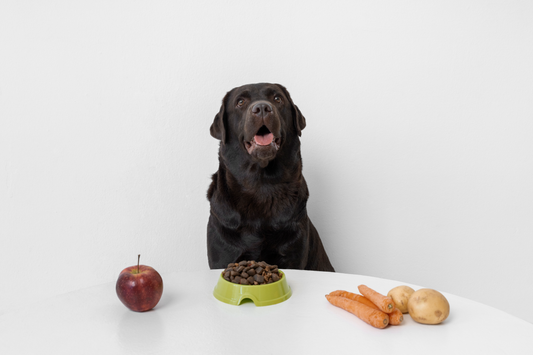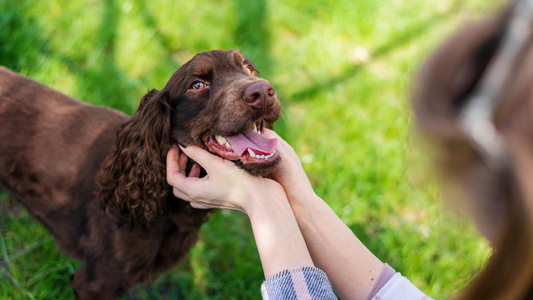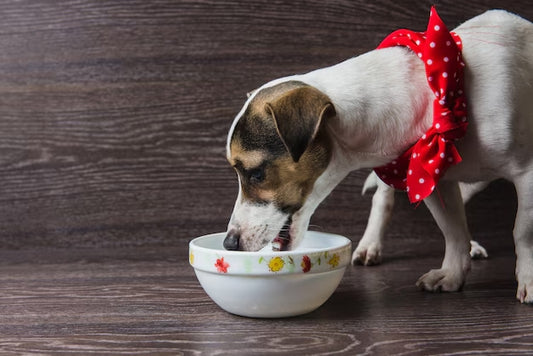Nail trimming can be a very intimidating task, but it is essential for the health and well-being of your furry friend. Long nails can cause discomfort and pain, affecting your dog's ability to walk and even causing joint problems. People often get confused between dog nails trimming vs grinding.
But what if we tell you there is a simple solution for it? Keep reading to find out.
Grinding your dog's nails is an effective way to keep them at a healthy length without causing your pet pain or discomfort.
In this article, we will discuss why it is essential to grind your dog's nails and the benefits of this practice. We will also discuss how to grind dog nails as part of our nails care for dogs strategy.
Why It Is Important To Grind Dog Nails?

Always grind your dog's nails using a safe tool. And grind a small part of your dog's nail at a time. The key is to grind across the bottom of the nail. Then gently grind the tip to smooth the rough edges. Lastly, grab the grinder high up from the top.
Many dogs are anxious or fearful about having their nails trimmed. Grinding your dog's nails can make the process less stressful by reducing the risk of pain and discomfort. It can also help your dog become accustomed to having their nails trimmed, thus, making future trims easier and less stressful.
Long nails can cause a variety of injuries to your dog, such as broken or split nails. All these are painful and take time to heal.
They can also affect your dog's ability to walk and run. Also, long nails can cause your dog to slip on smooth surfaces, leading to further injuries. They are a potential breeding ground for bacteria and fungi, leading to infections and unpleasant odors.
Overgrown nails can also pressure the nail bed and cause the toe joints to bend unnaturally, leading to chronic pain and arthritis.
A dog nail grinder can help maintain good hygiene by removing any dirt, debris, and bacteria trapped under the nails. It can also help promote comfort and mobility for your furry friend.
Grinding your dog's nails is essential for maintaining your pet's health and well-being. It can prevent injuries, promote comfort and mobility, maintain good hygiene, and make nail trimming less stressful.
Are you unsure how to grind your dog's nails, especially when your dog is particularly anxious or aggressive? If yes, then it's always best to seek the advice of a professional dog groomer or veterinarian.
However, if you want to do it yourself, we have compiled a step-by-step guide on how to grind dog nails.
Step-By-Step Guide On How To Grind Dog Nails
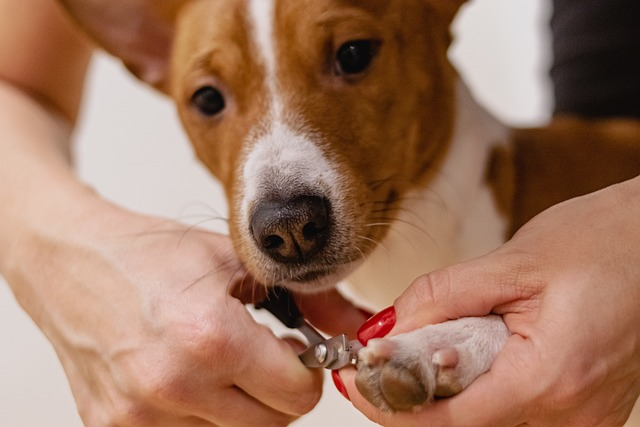
Grinding your dog's nails is a painless and stress-free way to keep their nails at a healthy length. We will discuss how to grind your dog's nails and some tips to make the process easier and stress-free.
But first, let's gather all the dog accessories you will need:
- Dog nail grinder
- Styptic powder or other clotting powder (optional; helpful in stopping the bleeding from accidental nicks)
Step 1 - Choose the Right Grinder
Many types of grinders are available on the market, so choosing the right one for your dog's size and nail thickness is essential.
Smaller dogs and puppies may only require a smaller, less powerful grinder, while larger dogs with thick nails will need a more robust grinder.
Dark nails, which you can't see quickly, are also easier to handle with a nail grinder than a nail trimmer.
Some grinders come with different grinding heads to suit different nail sizes and shapes, so choose one that is suitable for your dog.
Step 2 - Trim hair from paw pad
Any extra fur on your dog's paws should be cut off. Using a comb for dogs keeps their paws neat and makes it easier for you to see your dog's nails.
If you are worried you will accidentally cut your dog's nail too much, you should perform this step.
Step 3 - Get Your Dog Used to the Grinder
Before you start grinding your dog's nails, getting them used to the nail grinder is essential.
Let your dog sniff and examine the grinder, and turn it on so they can get used to the sound. You can also give them treats and positive reinforcement to help them associate the grinder with good things.
Step 4 - Hold your dog securely
When grinding your dog's nails, holding their paw securely is essential. This will ensure you have full control and can prevent accidental injury to your dog.
However, you also want to ensure that you're holding their paw gently to avoid causing any discomfort or pain.
Step 5 - Push the nail out
Place your dominant hand around the paw, with your thumb on top and your fingers underneath. Again, grip the paw firmly, but don't squeeze too hard.
Once you have a secure grip on your dog's paw, use your thumb to gently push one nail out of the pad at a time, so it's extended and easier to grind.
This will help you see the nail more clearly and ensure you're not grinding too close to the quick, sensitive part of the nail that contains blood vessels and nerves.
When grinding your dog's nails, work slowly and carefully in short bursts to avoid overheating the nail, which may cause your dog discomfort.
Step 6 - Find the Right Angle
When grinding your dog's nails, finding the right angle is essential. Hold the nail grinder at a 45-degree angle to the nail, and start grinding from the base of the nail towards the tip.
Be careful not to grind too close to the quick, the pink part of the nail that contains blood vessels and nerves.
Step 7 - Grind in Short Bursts
Grind your dog's nails in short bursts, and take breaks frequently to give your dog a chance to relax.
This will help prevent overheating of the grinder and avoid stressing your dog out. If your dog gets anxious or agitated, take a break and try again later.
Step 8 - Reward Your Dog
Finally, remember to reward your dog for good behavior. Give them plenty of treats and praise, and take breaks to play and snuggle with them. This will help make the process more enjoyable for you and your furry friend.
Trimming vs. Grinding Dog Nails

Grinding dog nails vs. clipping - which is better is always on the mind of pet owners. Let's explore the pros and cons of each method. This will help you decide which is best for you and your pup.
Trimming Dog Nails
Dog nail trimming involves using a pair of nail clippers to cut the nail down to a shorter length.
Here are some pros and cons to consider when you trim dog nails:
Pros:
-
It's a quick and straightforward process that can be done at home.
-
It's a good option for dogs with thin or small nails.
-
It's less expensive than grinding, as you only need a pair of clippers.
Cons:
-
It can be challenging to see where the quick (the part of the nail that contains blood vessels and nerves) is, which can result in accidental injury and bleeding.
-
Some dogs may find the sound of the nail clippers intimidating or scary.
-
If your dog has thick or tough nails, clippers may not be strong enough to cut through them.
Grinding Dog Nails
Grinding your dog's nails involves using an electric grinder to file down the nail to a shorter length. Here are some pros and cons of grinding:
Pros:
-
It's a safe and painless option, less likely to cause injury or bleeding.
-
It's a good option for dogs with thick or tough nails.
-
It lets you see exactly where the quick is, so you can avoid accidentally cutting it.
Cons:
-
It can be more expensive than trimming, as you'll need to purchase an electric grinder.
-
The sound of the grinder may make some dogs anxious.
-
It can be a more time-consuming process than trimming, as you'll need to file down the nail gradually.
So, we have laid out all the pros and cons of grinding and trimming. Now you must decide which method is best for you and your dog. Ultimately, it depends on your dog's individual needs and preferences.
If your dog has thin or small nails and is comfortable with clippers, trimming may be the best option for you. However, grinding may be a better choice if your dog has thick or tough nails or is sensitive to the sound of clippers.
How Often Should I Grind My Dog's Nails?
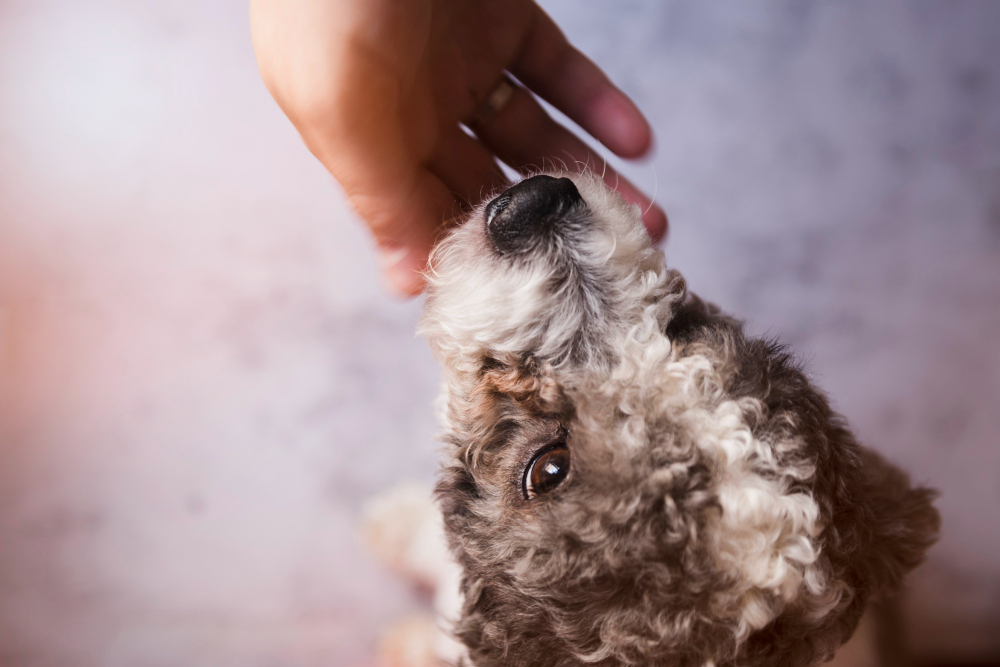
The frequency with which you should grind your dog's nails depends on various factors, such as the dog's breed, activity level, and rate of nail growth. However, as a general rule, you should aim to grind your dog's nails every 2-4 weeks.
If you hear a clicking sound when your dog walks on hard surfaces, it may indicate that their nails are too long and need to be ground down.
Additionally, if your dog's nails are curling under their paws or struggle to walk or run, it's a sign that their nails must be trimmed or ground down.
Overall, it is essential to watch your dog's nails and pay attention to any changes or signs indicating that they need to be trimmed or ground down.
If you need help with how often to grind your dog's nails or have concerns about their nail health, consult your veterinarian or a professional dog groomer for guidance.
Final words
And now you know all about grinding your dog's nails! Remember, ensuring your pup's paws stay healthy and happy is essential.
So why not turn nail grinding into a bonding experience? Grab treats, play music, and turn it into a pawdicure party! Your furry friend will thank you for it.
Keep on grinding, dog owners!
